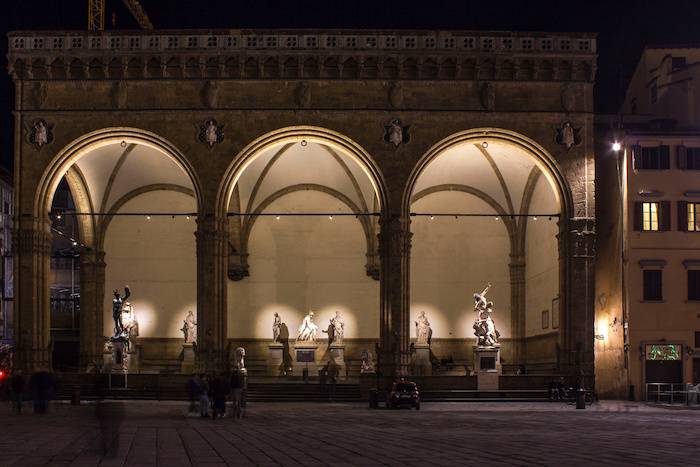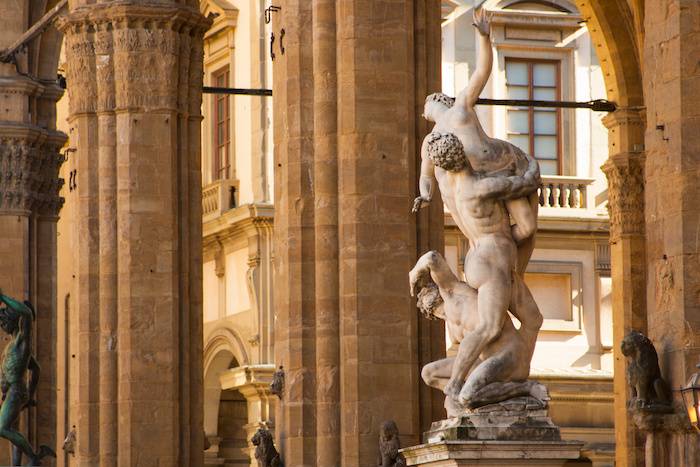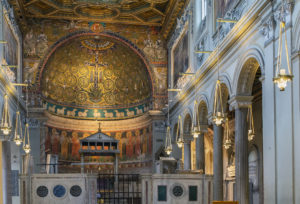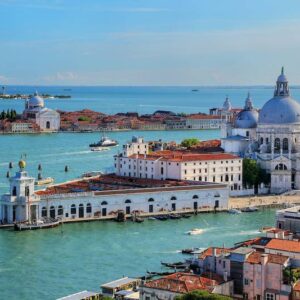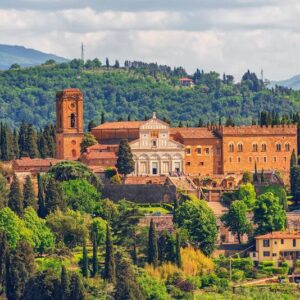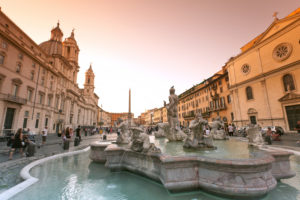Located on one of the corners of Piazza della Signoria in Florence, the Loggia dei Lanzi, commonly known as Loggia della Signoria, is one of the most interesting open-air museums in the city. The building consists of wide arches that face the square, resting on Corinthian pilasters. These arches were particularly appealing to Michelangelo, who suggested surrounding the entirety of Piazza della Signoria with them.
Let’s find out more about the Loggia dei Lanzi in Florence!
History of Loggia dei Lanzi
Loggia dei Lanzi was built by Benci di Cione and Simone di Francesco Talenti, following the design made by Jacopo di Sione between 1376 and 1382 with the intent of housing ceremonies or assemblies of the Florentine Republic.
The Loggia dei Lanzi is considered to be a Gothic building, even though the presence of the arches and the sculptures it houses suggest that it was heavily inspired by the Renaissance style.
After the construction of the Uffizi Gallery, the roof of the Loggia was modified by Bernardo Buontalenti, creating a terrace from which the Medici family could watch the events hosted in Piazza della Signoria.
Reasons behind its name
The name “Loggia dei Lanzi” was probably attributed to this building because apparently in the XVI century the Lanzichenecchi, a group of mercenaries, stayed in this place before going to Rome to loot it in 1527.
Sculptures of Loggia dei Lanzi
As mentioned before, this open-air museum was created in the XVI century by Cosimo I de’ Medici mainly because he was a great fan of art but also because he wanted to impress his guests by showcasing the great collection of sculptures that his family possessed.
The majority of the statues that we can admire in Loggia dei Lanzi today are inspired by tales of ancient Greek history, myths and legends with protagonists that usually are heroes, gods or demigods.
Let’s explore some of them:
PERSEUS WITH THE HEAD OF MEDUSA:
Perseus with the Head of Medusa (1545 – 1554) is a bronze sculpture made by Benvenuto Cellini and commissioned by Duke Cosimo I de’ Medici. This sculpture is inspired by the mythological story of Perseus who beheaded Medusa, a woman with snakes instead of hair that turned everyone who looked at her to stone. This statue figures Perseus proudly standing on Medusa’s dead body and holding her head up.
ABDUCTION OF A SABINE WOMAN:
Abduction of a Sabine Woman (1579 – 1583), also known as the Rape of the Sabines, is a marble sculpture made by Johannes of Boulogne. This sculpture depicts a young man taking a woman from an older man and it’s based on the rape of the Sabine Women in ancient Rome’s history. This statue was commissioned by Francesco de’ Medici of Tuscany.
MEDICI LIONS:
The Medici Lions are two marble sculptures commissioned by Ferdinando I de’ Medici, Grand Duke of Tuscany. The first lion dates back to the II century AD and the second lion to the XVI century. The sculptures depict two lions proudly standing with a sphere under their paw and looking to the side.
RAPE OF POLYXENA:
The Rape of Polixena (1855 – 1865) is a marble sculpture made by Pio Fedi, considered to be his best work. This statue depicts Polixena, the daughter of Priamo, who was kidnapped by Neottolemo who was sacrificed.
Conclusion
If you’re planning on visiting the city of Florence, stopping to admire the great masterpieces located in Loggia dei Lanzi is definitely a must. If you wish to fully immerse yourself in the beauty of the city of Florence, make sure to check out our other blogs and book a Florence tour with us for the best experience possible!

